Creative gardening solutions like aeroponics have become very popular in recent years. Issues like soil erosion, extreme weather events and water quality issues have created a need for innovation in the farming and gardening communities.
Aeroponic systems deliver nutrients directly to the roots, allowing plants to grow faster and creating bigger yields. The absence of a growing medium prevents pathogens and pests from damaging your plants, and the ability to go vertical reduces the need for bending and kneeling.
Below I’ve compiled a detailed aeroponics review to investigate the 15 pros and 7 cons that anyone interested in growing needs to know.
Advantages of Aeroponics
Since its development, aeroponics has been gaining in popularity due to its unparalleled efficiency in growing nutritious and delicious food. Continuous advancement in technology gives growing with aeroponics many advantages over other gardening techniques.
Larger and More Nutritious Yields
Aeroponic grown plants have been proven to deliver higher yields and be more nutritious than their soil grown counterparts.
To prove this concept, the University of Mississippi grew the same crops in an aeroponic system and soil. They found that aeroponics yielded plants with 30% bigger produce than its soil competitor.
It’s not only about size, though. The same study found that aeroponic plants have better phenolics, flavonoids, and antioxidant properties. Filtering out the technical jargon, they taste better and hold more nutritional value.
Better Delivery of Nutrients
The delivery system of an aeroponic setup sprays a solution of water and essential minerals directly on to the roots of the plants. This way, almost all the nutrients get absorbed and very little nutrients or water is wasted.
On the other hand, the conventional farming setup wastes a lot of nutrients. Some evaporate, others leach, and some get utilized by the living organisms within the soil.
Easy To Customize Plant Food
The nutrient profile delivered to the plants is much easier to control and allows growers to supply a perfectly balanced diet of minerals catered directly to what a plant needs.
These mineral solutions are commonly a 2 part mixture of micro nutrients and more common elements that are traditionally found scattered throughout the soil. Rather than trying to maintain a balanced soil, the nutrient solution gets mixed to the precise ratio directly into the water.
One of the best Mineral Solutions on the market is Humboldt’s Secret 2 part liquid mix. It provides a steady balance of everything a plant needs from seedling to fruiting. Check out our full article on The Best Nutrient Solutions for more information
- COMPLETE MACRONUTRIENT PROFILE FOR PLANT NUTRITION: The combination of our Base A & B Bundle...
- EASY-TO-USE TWO-PART SYSTEM: Simple use both bottles at equal rates throughout the entire...
- HYDROPONICS EXCELLENCE FOR ALL CULTIVATION MEDIUMS: Our cutting-edge system excels in...
Faster Growth
With direct and controlled feeding, plants in an aeroponic system don’t have to compete for nutrients with each other. This ensures every plant receives the perfect amount of nutrients and water it needs to promote healthy growth.
Because of this direct food delivery system, plants don’t need to struggle and put energy into growing roots. Instead, they can focus on generating a strong and healthy stalk to supply nourishment for faster growth and larger yields.
More Efficient Nutrient Uptake
Using a fine mist within a grow chamber creates an environment where the minerals and water solution can cling to the plant roots without dripping off. These small water droplets provide the most efficient food delivery scenario to the plant.
The high oxygen levels available in the root chamber promote a higher nutrient uptake creating the perfect environment for accelerated growth. The misting technique keeps the humidity level of the chamber at an elevated level to prevent the roots from drying out between misting cycles.
Constant recycling of the water in the system ensures that there is very little wasted nutrients, water or energy throughout the process.
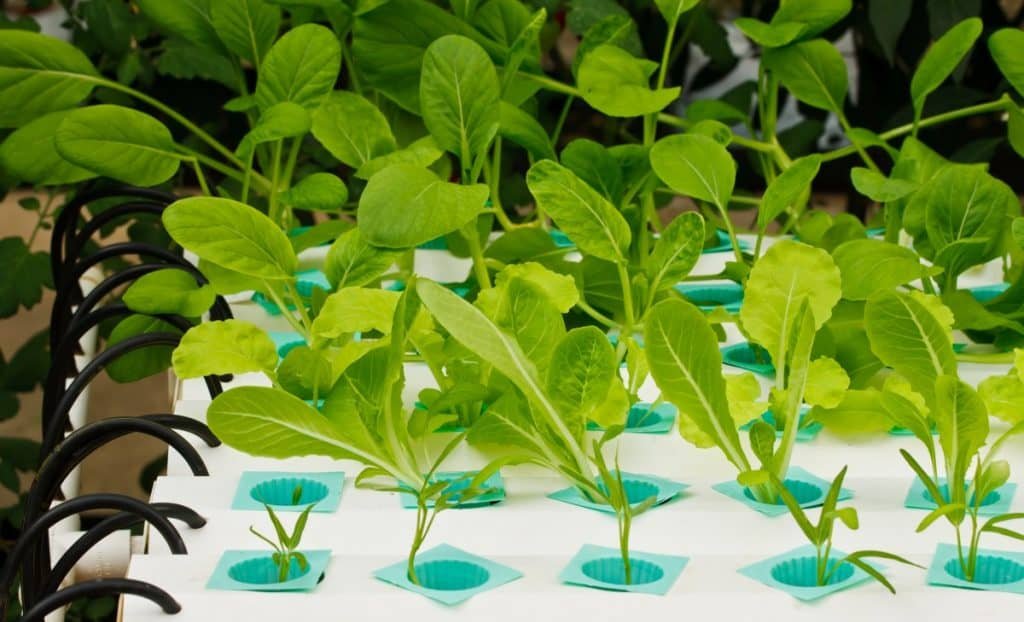
Compact and Scalable to Any Space
Aeroponics setups come in many different shapes and sizes, they can be built using parts from your local hardware store or purchased for use in a window at home. Most home use systems are modular and combine the nutrient reservoir and growing chamber in one.
Having a system that can be carried or wheeled around provides flexibility to grow indoors or outdoors depending on the season and weather conditions.
Rather than building a large bulky system, having multiple smaller systems allows a grower to expand vertically for a more efficient use of space. If you want to double production, adding a second system is an easy way to get more yield while keeping your operation simple and cost effective.
That’s why Nasa uses aeroponics in its spacecraft. “Each ounce of food and water produced aboard a spacecraft reduces payload weight, allowing space for other cargo that can’t be produced on board.”
Multiple Design Options to Choose From
Aeroponic systems can be designed to grow almost any type of plant. Whether the produce you’re interested in lends itself to growing in a vertical tower, a stacked horizontal design, or a simple bucket in front of your living room window, there’s an aeroponic system for it.
Low-Pressure Aeroponics (LPA)
A low pressure aeroponic system is the most simple and straightforward design for at home growing. Rather than using a high-tech combination of high pressure hose and multiple misting nozzles, a low pressure system soaks the roots with nutrients and water then leaves them to absorb it in the air.
Many aeroponic purists argue that this technique isn’t really aeroponics due to the lack of misting, but the roots are still sustained in air and the results are hard to argue with. Having only 1 moving part (the pump) and avoiding the inconvenience of clogged misters and leaking water lines creates a nearly maintenance free system.
The best example of a low pressure aeroponics setup is the Tower Garden. This Vertical Garden can grow 20+ plants in a space the size of your bedside table. It not only grows delicious and nutritious food at home with little effort, it also looks good making it a living design feature and conversation piece.
I haven’t had to buy tomatoes, cucumbers, kale, bell peppers, strawberries or basil since starting my Tower Garden adventure. Check out the Tower Garden website to see how easy aeroponic growing at home can be.
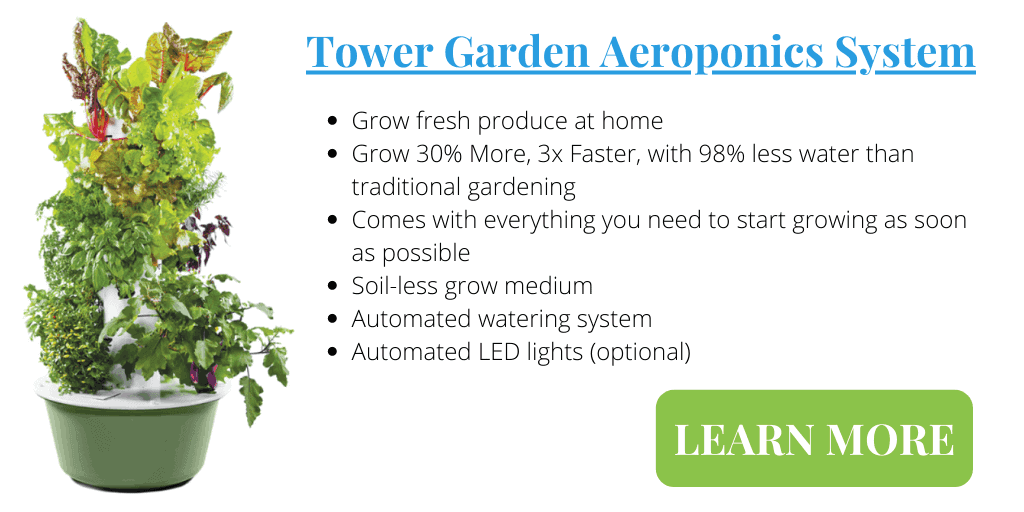
Ultrasonic Fogger Aeroponics (Fogponics)
If you want to clone seedlings, fogponics can be your best bet.
Fogponics is another simple aeroponics growing method. All you need is a water container and a small ultrasonic atomizer. Since the atomizer generates ultra-fine droplets, the delicate cuttings would be able to pick up the nutrients much easier than other aeroponic setups.
On the downside, when compared with sprinklers, atomizers generate a lot of heat. As a result, they can increase the container humidity and decrease the water level faster. So again, you might be restricted in your plant choices.
- ♦ WIDELY USE - AGPtEK fogger machine indoor HS0056 can add a great amount of mist to your...
- ♦ WATERPROOF - The ultrasonic foger is waterproof and the length of the power adapter cable...
- ♦ ENVIRONMENTAL PROTETION - Our plant humidity fogger can provide large amount of mist....
High-Pressure Aeroponics (HPA)
This setup is usually used for commercial production. You’ll have to get sprinklers generating fine droplets and connect them to pumps with sufficient pressure.
As you might’ve guessed, such a setup would come at a considerably higher cost. But since you’re free to plant whatever you like, you should be able to cover its costs pretty soon.
However, you should be ready to do a lot of maintenance on a regular basis. If any of the installed equipment malfunctions, a big part of your produce might be affected significantly.
Save 90% on Your Water Bill
Water scarcity is becoming more and more serious. The latest statistics show that about 1.2 billion people suffer from physical water scarcity. And another 1.6 people don’t have a healthy infrastructure to carry water from aquifers into their homes.
Simply put, aeroponics is the ultimate solution to save our precious freshwater.
Why? Well, after spraying the plants, the water that wasn’t absorbed drips back into the reservoir to be sprayed later on. Soils, on the other hand, lose a big part of irrigation by evaporation and seepage.
According to Nasa, aeroponics uses up to 98% less water compared to other forms of gardening and food growing. The AeroGarden is a great example of how a small countertop garden can efficiently grow fresh herbs and small plants using very little water and requiring very little work.
- INDOOR GARDENING MADE EASY: Enjoy abundant harvests year round with the AeroGarden Harvest...
- ROOM FOR 6 PLANTS: This compact, stainless steel countertop garden features a spacious grow...
- HIGH-PERFORMANCE GROW LIGHT: The full spectrum 20W LED grow light with an automatic on/off...
No Need for Soil
Scarce water is catastrophic, but it’s been known for a while now. However, most people don’t know that we face a similar situation with soil degradation due to unsustainable agriculture practices and a chemically polluted environment.
Construction and development is taking more and more of our fertile soil. Between 1992 and 2012, the world lost more than 30 million acres of farmland. 11 million acres were lost in America alone!
Several countries have already shifted to aeroponics to satisfy their agricultural needs.
Take Vietnam for example. Since they don’t have enough fertile land, they were obligated to import expensive potato seedlings. This placed them under the burden of excessive transportation and storage fees.
Now, they successfully achieved self-sufficiency by growing disease-free potatoes in aeroponic systems.
No More Pesticides, No More Pollutants
Thanks to the absence of soil; pests and diseases won’t easily thrive in an aeroponic system. Therefore, you can minimize the usage of harmful pesticides to a great extent. It’s not uncommon to eliminate pesticide use altogether!
Pests are much easier to control while growing indoors but the plants grown in an aeroponic system will be extremely healthy and have a natural resistance to pests for that reason. Considering that around 200,000 people die yearly from pesticide exposure, avoiding exposure is more important than ever.
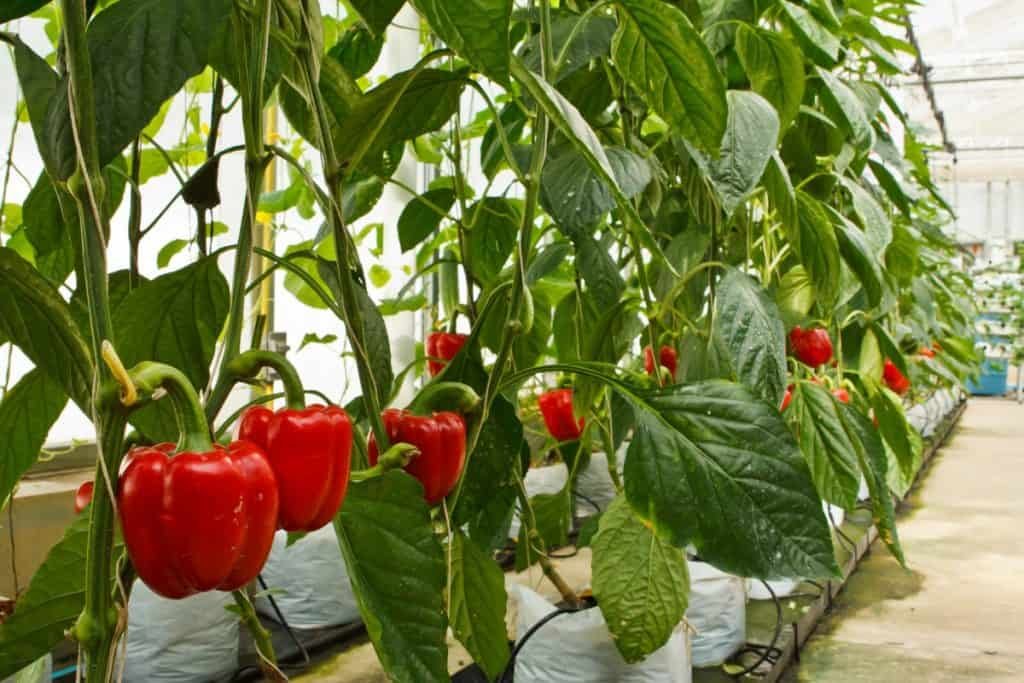
Easier Transplanting
In traditional soil, seedlings’ roots are prone to damage when they’re transplanted into a bigger area. They’re too delicate to endure pulling through the thick layers of soil.
As you might expect, these damaged roots won’t be able to absorb the required volume of nutrients and water. As a result, their stems might start to wilt while their leaves turn yellow. This condition is better known as transplant shock.
Because roots are freely floating in an aeroponic system, this condition is much less likely to occur. Plants will continue their crop cycle seamlessly and efficiently once they’re transplanted from a seedling or cloning tray to their final grow location.
Similarly, plants could be harvested individually without the fear of disturbing the roots of the rest of the crop. This could save a lot of time by increasing your yield rate.
Growing Crops Year-Round
Aeroponic systems can be grown indoors or outdoors depending on the weather conditions of your region. Consequently, you can fine-tune the conditions to yield your favorite crops, regardless of the current season.
Many systems can be designed on wheels allowing them to be easily moved outdoors during warmer seasons.
Adding an automatic timer and high efficient LED grow lights to an aeroponic garden makes growing indoors all year around a simple task. With Full Spectrum lighting there’s no longer a need to have different types of bulbs and Lighting systems.
Technology has revolutionized the grow light industry propelled by the increasing popularity of indoor farms. The cost to purchase and operate indoor full spectrum LED grow lights is a fraction of the price from 2 years ago. See our full guide on Lighting Requirements for more information.
- Full Spectrum: Barrina LED grow lights 4ft provide indoor plants with full-spectrum sunlight...
- Super Bright and High PPFD: Consuming only 252W with 1152 LEDS totally, replace 1400w general...
- Easy Installation: With included tape, clips and cable ties, you could install the lights by...
Powerful Research Tool
In soil farming, there’s very little information about the growth of certain plants. Their most vital part, the roots, were kept out of our reach without using invasive approaches.
Aeroponics ultimately changed this fact. Researchers can directly expose the roots to a variety of experimental parameters without interference from external factors.
This makes it much easier to monitor the actual root growth of a plant and how it relates to the plant’s performance.
Engaging Science Projects
I remember the first time I grew beans as a science project at school. It was magical to watch them progress from lifeless brown seeds into prosperous green sprouts.
Today’s kids are luckier though. With aeroponics, kids can take part in the full cycle of plant growth. This type of education and experience reduces the separation most people have between their food and the farm, it will also boost a child’s gardening confidence and knowledge early on.
Easier and Faster Cloning
In traditional gardening, cuttings get started in small starter pods before eventually being transplanted into larger pots. In aeroponics however, the process is much simpler.
Your cuttings can be placed directly into your aeroponic system without additional starter cubes. Since this system nourishes plants better, the cuttings will grow bigger and faster without the need for cloning solutions.
Many people use a simple aeroponic coning chamber that holds the stalk of a cutting while the bottom gets sprayed in the growing chamber beneath. These types of systems are simple to use and come in a number of different sizes depending on your needs. Creating clones from cuttings of your successful plants accelerates your growing results.
- INDUSTRY MADE CLONING MACHINE: not hand-made DIY thing. All engineering reliable parts, SOLD...
- AEROPONIC PROPAGATOR CLONING SYSTEM: Root your cuttings in 4-10 days and consistent 100%...
- FREE PROPAGATION DOME INCLUDED: Our plant cloning system comes with all parts needed including...
Disadvantages of Aeroponics
Nothing is perfect, Even with all the advantages mentioned above, aeroponics is not without its downsides which you should consider before implementing your setup.
Higher Upfront Cost
Since it needs fewer resources and less water, aeroponics is more cost-effective when compared with soil and even aquaponics. Learn more about what aquaponics is in my article, What is Aquaponics – the Complete Guide.
However, when comparing the initial cost, you’ll realize that aeroponic systems can require a larger start up capital to begin with.
Building your own aeroponic setup will cost around the $300-$400 mark. This includes a pump, tubing, nozzles, a food grade plastic reservoir, automatic timer and some nutrients. A system this size should be able to grow 8-12 plants, expect to kick in $100 more to get a set of grow lights.
Purchasing a proven aeroponic growing system will cost $500-$1000 but may save you a lot of money and headaches in the long run.
Requires Regular Monitoring
Aeroponic systems need a watchful eye on them in case of a pump failure, electrical outage and just to maintain nutrient levels. Depending on the level of sophistication of the system, most potential issues can be prevented or monitored autonomously.
Like any type of gardening, regular maintenance like pruning and picking produce when it’s ready to harvest can’t be avoided. These tasks will become a peaceful therapy once your system is up and running, and the reward will be delicious fresh produce right from the vine.
Water levels can be controlled using a simple level or float sensor, PH levels can be monitored with a handheld or hard wired meter and the lights and pump can be controlled with simple low cost timers.
To avoid the steep learning curve you can purchase a tried and true “Ready-To-Grow” system like the Tower Garden. It comes with all the supplies, instructions, and customer support to get you started and keep you growing worry free.
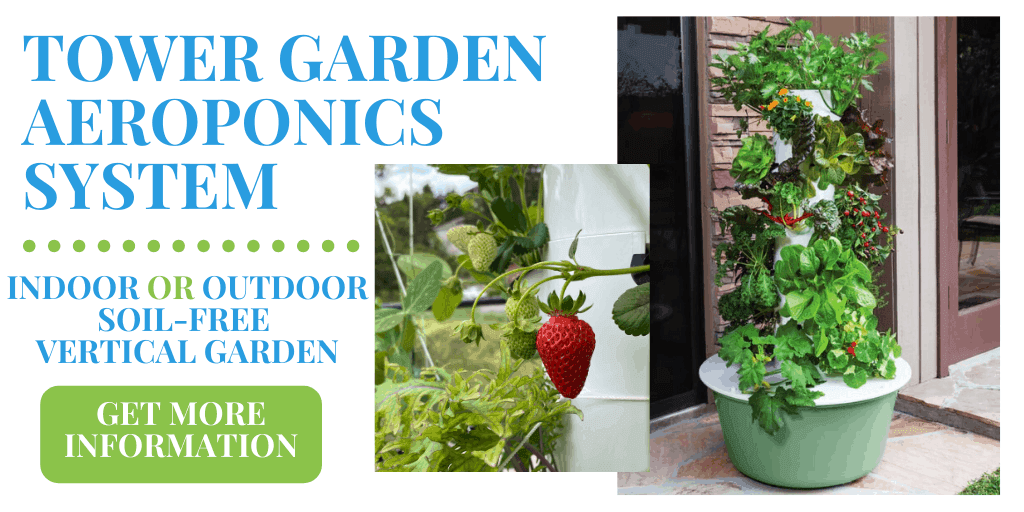
It’s All In The Details
Do-it-yourself systems can be easy to build but usually take some finessing and fine adjustments to get working properly. It’s important to get your spray patterns right or your plants will suffer.
Always make sure your system is properly cleaned of all dirt, oils and fine bits of plastic from construction. Once that’s complete, operate the system for 24 hours and check for leaks and check the water temperature periodically to be sure the pump isn’t creating too much heat.
Once all the testing, fine tuning and adjustments are complete the final step is sanitizing it all. This can be done with a Peroxide and Alcohol solution, be sure to give it all a thorough rinse before adding the plants to the system.
Regular Cleaning Is a Must
Aeroponic systems can be isolated against pests and disease, as established before. But since you can’t achieve a 100% sealed environment, bacteria and fungi will thrive well in its humid condition.
Worst of all, the closed nature of the aeroponic system raises the likelihood of mass infection. A single bacterial focus can ruin a whole crop in a matter of days.
Growers typically use a solution of 35% hydrogen peroxide and 99% isopropyl alcohol for the regular disinfection.
The cleaning itself isn’t hard, though. You simply have to expose the inside and wipe it down with these chemicals. Unlike aquaponics, there’s no growing medium that should be cleaned, replaced, or removed.
However, you’ll have to avoid messing with the chemicals’ concentration. Otherwise, they might damage the delicate roots.
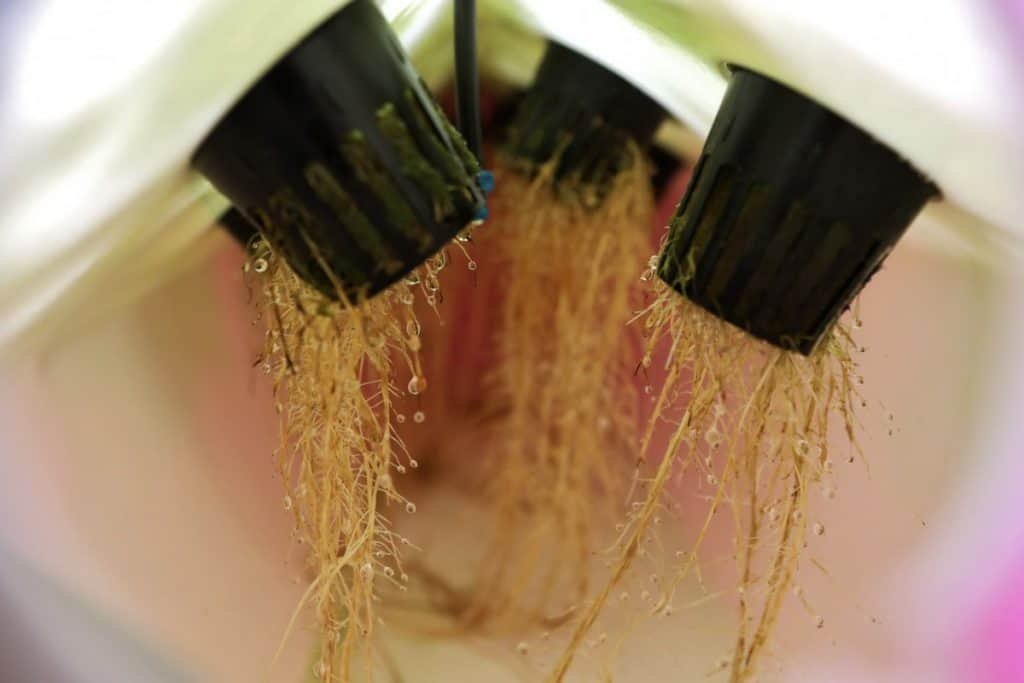
Small Components Are Prone to Blockage
As the mineral-rich water is carried through the delicate components of an aeroponic system, a small percentage of deposits will inevitably accumulate. If you’re lucky, these deposits would be flushed aways during regular cleaning.
If not, they’ll start to grow over time until the system suddenly fails. Therefore, it’s always a good idea to allocate an emergency fund to quickly cover maintenance.
Finding Help Can Be Difficult
Aeroponics, as a concept, has been around since 1911. But it wasn’t until 2006 that it began to spread globally. As a result, you might not have access to enough educational content or professional personnel.
You might find yourself obligated to carry on your own experiments to find out what works and what doesn’t. While some people may like the thrill of this little adventure, it can be costly in the long run.
Sensitive to Power Outages
You must have an emergency generator or backup battery as part of your aeroponic system. Otherwise, your plants could be negatively impacted by a simple power outage. You can’t really do the misting manually since this process should be delicately fine-tuned, as established earlier.
Many people connect an Uninterruptible Power Supply unit to their aeroponic system in case of power failure. Because aeroponic systems don’t require much power, a small UPS should work perfectly.
- 1500VA/900W Intelligent LCD Battery Backup Uninterruptible Power Supply (UPS) System uses...
- 12 NEMA 5-15R OUTLETS: Six battery backup & surge protected outlets; Six surge protected...
- MULTIFUNCTION LCD PANEL: Displays immediate, detailed information on battery and power...
In Conclusion
As you’ve read, aeroponics is the ultimate way to grow healthier and bigger plants. The main reason behind this is the direct delivery of nutrients through the misted environment.
Since most aeroponic systems are closed-loops, controlling pests is much easier. You don’t need to use the same crazy amount of pesticides used in soil.
Its most notable disadvantages lie in the high starting cost and the required technical knowledge. Then again, after successfully installing the system, these shouldn’t be major issues.
Above all, the superior yield of aeroponics is a huge plus over its competitors. If you haven’t tried it yet, it’ll definitely amaze you with the results.






